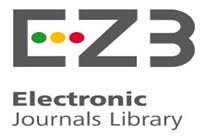IJSEA Archive (Volume 2, Issue 12)
International Journal of Science and Engineering Applications (IJSEA) (Volume 2, Issue 12 - December 2013)
Air Quality Modeling of Santhepet Street Canyon of Mysore City Using FLUENT
Keywords: Street canyon; Suspended Particulate Matter; Sulfur dioxide; Nitrogen dioxide; Modeling; FLUENT.
Automobile transport has become an inherent part of human life, and the adverse effect like air pollution is becoming more drastic. Vehicular traffic is leading to deterioration of air quality in the streets of Mysore city in recent years. It is very important to assess the impact of traffic related air pollution to take administrative decisions for improving air quality. In the present study, an attempt has been made to study the street canyon air quality by monitoring the concentration of pollutants like Suspended Particulate Matter (SPM), Sulfur dioxide (SO2) and Nitrogen dioxide (NO2) in Santhepet street canyon of Mysore city. Pollutants are monitored for 8 hours using instrument High Volume Air Sampler (HVAS) at two sampling stations in the canyon. During sampling period, the meteorological condition such as temperature, wind speed and humidity are found to be 330C, 3-4km/hr and 50% respectively. The pollutants SPM, SO2 and NO2 concentration at sampling station 1 are 943.89, 15.73 and 1319.57 µg/m3 and concentration of pollutants in sampling station 2 are 520.69, 13.93 and 350.87µg/m3 respectively. Computational Fluid Dynamics (CFD) is a tool which assists in modeling the airflow and dispersion of pollutants among complex urban street canyons. FLUENT is the most widely used commercial CFD code for a range of flow applications. An attempt has been made to study the dispersion of the pollutants inside an urban street canyon using FLUENT.
[1] A. Galani Neofytou, A. Venetsanos, J. Bartzis and S. Neville, 2009. “Prediction and Study of Pollutant Dispersion in A Street canyon in London Using Computational Fluid Dynamics Techniques”. Global NEST Journal, Vol. 11, pp 434- 439
[2] Alan J. Cimorelli, Steven G. Perry, Akula Venkatram, Jeffrey C. Weil, Robert J. Paine, Robert B. Wilson, Russell F. Lee, Warren D. Peters and Roger W. Brode 2004. “AERMOD: A Dispersion Model for Industrial Source Applications. Part I: General Model Formulation and Boundary Layer Characterization. Journal Of Applied Meteorology, Vol. 44, pp 682-693
[3] Alexander Baklanov, 2000. “Application of CFD Methods for Modelling in Air Pollution Problems: Possibilities and Gaps”. Journal Environmental modeling and assessment, Vol. 65, pp 189-190
[4] Brian P. Leaderer and Theodore R. Holford, 2010. “Modeling effects of traffic and landscape characteristics on ambient nitrogen dioxide levels in Connecticut”. Atmospheric Environment, Vol. 44, pp 5156-5164
[5] Cheng-Hsin Chang, Robert N. Meroney, 2003. “Concentration and flow distributions in urban street canyons: wind tunnel and computational data”. Journal of Wind Engineering and Industrial Aerodynamics, Vol. 91, pp 1141–1154
[6] D. Mumovic, J.M. Crowther and Z. Stevanovic, 2005. “Integrated air quality modelling for a designated air quality management area in Glasgow”. Building and Environment.
[7] Fabio Murena, 2012. “Monitoring and modelling carbon monoxide concentrations in a deep street canyon: application of a two‐box model”. Atmospheric Pollution Research, Vol. 3, pp 311‐316
[8] G. Wang a, F. H. M. van den Bosch and M. Kuffer, 2008. “Modelling Urban Traffic Air Pollution Dispersion”
[9] Gustavo Olivaresa, Christer Johanssona, Johan Stro¨ma, Hans-Christen Hansson, 2007. “The role of ambient temperature for particle number concentration in a street canyon”. Atmospheric Environment, Vol. 41, pp 2145–2155
[10] J. Garcia, R. Cerdeira, N. Tavares and L. M. R. Coelho, 2011. “Studying the Effect of Street Geometry in Particle Concentration”, 14th Conference on Harmonisation within Atmospheric Dispersion Modelling for Regulatory Purposes, pp579-583
[11] J.D. McAlpine and Michael Ruby, 2004. “Using CFD to Study Air Quality in Urban Microenvironments”. Environmental science and Environmental computing, Vol. 2, pp1-31
[12] Jong-Jin Baik, Jae-Jin Kim and Harindra J. S. Fernando, 2003. “A CFD Model for Simulating Urban Flow and Dispersion”. Journal of Applied Meteorology, Vol. 42, pp 1636-1648
[13] Minjoong J. Kim, Rokjin J. Park and Jae-Jin Kim, 2012. “Urban air quality modeling with full O3-NOx-VOC chemistry: Implications for O3 and PM air quality in a street canyon”. Atmospheric Environment, Vol. 47, pp 330-340
[14] P. Goussea, B. Blocken, T. Stathopoulos, G.J.F. Van Heijst, 2011. “CFD simulation of near-field pollutant dispersion on a high resolution grid: a case study by LES and RANS for a building group in downtown Montreal” Atmospheric Environment, Vol. 45, pp 428-438
[15] Parham A. Mirzaei and Jan Carmeliet,2012. “Dynamical Modeling of Stochastic Wind Flow in Street Canyons”, International High Performance Buildings Conference at Purdue.
[16] S. Di Sabatino, R. Buccolieri, B. Pulvirenti and R. E. Britter, 2007. “Flow and Pollutant Dispersion in Street Canyons using FLUENT and ADMS-Urban”, Environment Model assess, Vol. 13, pp 369-381
[17] S. M. Salim, K. C. Ong and S. C. Cheah, 2011. “Comparision of RANS, URANS and LES in the prediction of Airflow and Pollutant Dispersion”. Proceedings of the World Congress on Engineering and Computer Science, Vol. 2
[18] Sathe Yogesh V, 2012. “Air Quality Modeling in Street Canyons of Kolhapur City, Maharashtra, India”. Universal Journal of Environmental Research and Technology, Vol. 2, pp 97-105
[19] U. W. Tang, Z.S.Wang, 2008.“Fragmentation of Urban Forms and the Environmental Consequences: Results from a High-Spatial Resolution Model System”. SPIE , Vol. 7, 144, pp 1-9
[20] U.W. Tang and Z.S. Wang, 2007.“Influences of urban forms on traffic-induced noise and air pollution: Results from a modelling system”. Environmental Modelling
& Software, pp 1-15
[21] Xian-Xiang Li, Dennis Y. C. Leung, Chun-Ho Liu and K. M. Lam, 2007. “Physical Modeling of Flow Field inside Urban Street Canyons”. Journal of Applied Meteorology and Climatology, Vol. 47, pp 2058- 2067
[22] Ratnesh Trivedi, M. K. Chakraborthy and B. K. Tewary, 2009. “Dust Dispersion Modelling using fugitive dust model at an open cast coal project of Western Coal Field Limited, India”. Journal of scientific and research, Vol. 68, pp 71-78
@article{lavanya02121001,
title = "Air Quality Modeling of Santhepet Street Canyon of Mysore City Using FLUENT ",
journal = "International Journal of Science and Engineering Applications (IJSEA)",
volume = "2",
number = "12",
pages = "191 - 196",
year = "2013",
author = " Lavanya G., Shamily B. M, Shyamanth S. Kashyap, Shilpa B. S. ",
}










